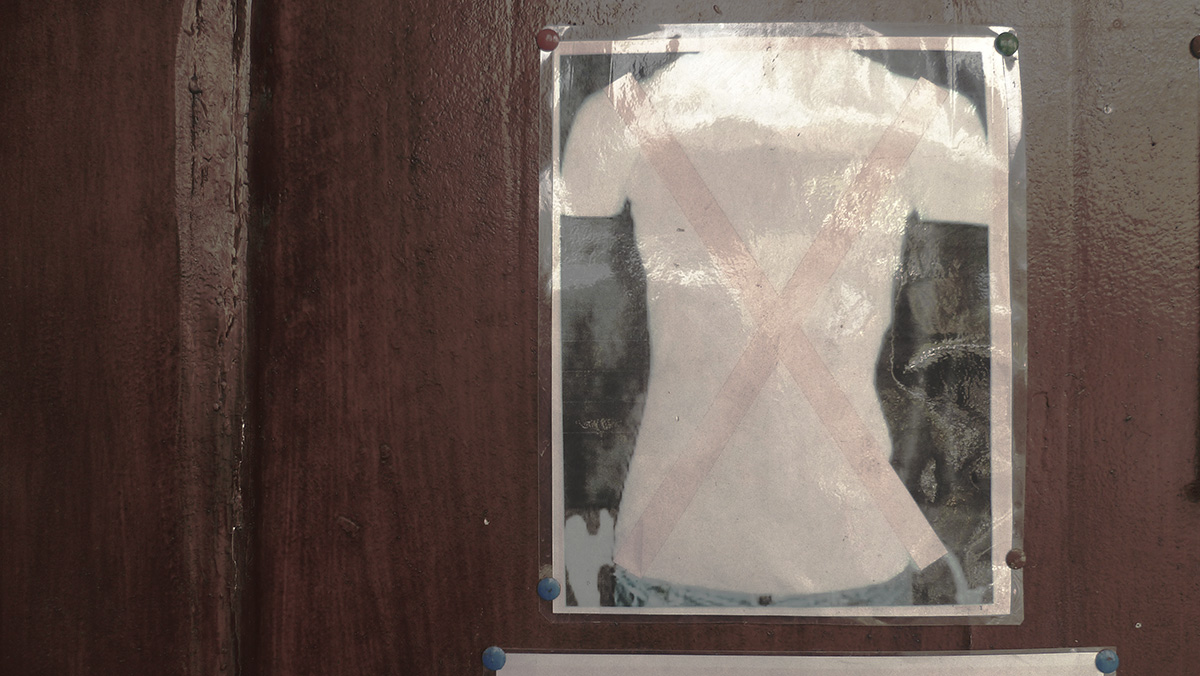[Your Absence was Noticed] > expo and performance night
From 20 to 27 August 2016, the 23rd floor of the Antwerp – Tower is occupied by artists, activists and philosophers alike. In discussions and through photography, video, performance, painting, drawing and installation art, they work around the idea of melancholy as an activist stance against the strategies of conformism, positivism, populism and profitism that rule the world today. All work accumulates in a happening on Friday 26 August.
With contributions from
Özge Akarsu – Tim Boers – Juliane Borths – Koen Boyden – Sarah de Graeve – Joke Druyts – Sam Geuens – Kris Gevers – Wataru Iwata – Nico Jacobs – Klaas Janszoons – Lennart Langanki – Eef Lommelen – Luciano Margo – Céline Mathieu – Inge Meijer – Gaston Meskens – Faryda Moumouh – Paul-Ruben Mundthal – Agnes Nagygyörgy – Torri Nickmans – Mr. Swolfs – Isabel Tesfazghi – Narcisse Tordoir – Frederik Van den Eynde – Dennis Van der Planken – Myrthe van der Mark – Britt Zoë Van Dongen – Petra Van Dorpe – Filip Van Kerckhoven – Hans Verhaegen
Venue
Antwerp Tower 23rd floor, De Keyserlei 5, 2018 Antwerp
Expo
Opening: Saturday 20 August, 18h00 – 22h00
opening hours
Saturday 20 Aug, 18h00 – 22h00
Sunday 21 Aug, 14h00 – 22h00
Monday 22 Aug, 14h00 – 22h00
Tuesday 23 Aug, 14h00 – 22h00
Wednesday 24 Aug, 14h00 – 22h00
Thursday 25 Aug, 14h00 – 22h00
Friday 26 Aug, 14h00 – 02h00
Saturday 27 Aug, 14h00 – 18h00
Performance night on Friday 26 August
20h00 – talking [sex], an open workshop (Dutch/English) hosted by Eef Lommelen
21h30 – performance by the collective CMMC
22h00 – soundscapes & poetry (soundscapes performed by TRAGIC REALIST FICTION and friends, with skyline view and an open mike for everyone who wants to recite a poem or express a thought)
Download and spread the flyer of the event.
This happening is part of the 2nd World Conference on the Value of Melancholy in Times of Cheap Commitment, organised and curated by Gaston Meskens and Juliane Borths for the Institute of Idle Curiosity for Elements of Seduction.
Revisiting Melancholy
Robert Burton published the first edition of his magnum opus ‘The Anatomy of Melancholy’ in 1621. His aim was to write a definite and comprehensive study of the meaning of melancholy. His book promised to explain ‘.. What it is: With all the Kinds, Causes, Symptomes, Prognostickes, and Several Cures of it. In Three Maine Partitions with their several Sections, Members, and Subsections. Philosophically, Medicinally, Historically, Opened and Cut Up…’. What looks at first sight as an exhaustive analysis of melancholy as a disease to be cured is in fact much more. Burton uses melancholy as a perspective to inquire into all human emotions and thought. In that sense, the Anatomy can also be seen as a total encyclopaedia of the human condition of that time.
Our modern times may now inspire us to re-read that meaning for the contemporary human condition, although not through a systematic re-interpretation of the encyclopaedic classes and categories, but on the basis of one simple idea….
Melancholy is not depression neither pessimism. Drawing on interpretations from the pre-modern Romantic and Decadent Era, it can be described as the aesthetical consolation that comes with the awareness of the impossibility of pure beauty, unity and harmony, and of the inevitability of imperfection, decadence and uncertainty. The idea however is that melancholy is not a detached but an ethical experience, and that this became apparent with modernity: melancholy is the human condition resulting from a deliberate awareness of the limits to rational instrumental reason in a context of social appeal. That social appeal may either be love, friendship or lust, or social or political engagement. The implications of modernity rendered melancholy with a social meaning: the impossibility of pure beauty, unity and harmony, and of the inevitability of imperfection, decadence and uncertainty, is not experienced by way of detached observation, but in a reflexive way in social interaction.
In this vision, the ‘end state’ of melancholy is still aesthetical consolation. But that state is not passive, as it arises from an ethical demand. In its recognition of the intrinsic ambiguity of human interaction and of the inherent complexity of social organisation and coexistence, it is an intellectual withdrawal from the delusion of grandeur of a society obsessed with rationality, security, efficiency, predictability and competition. In its disdain for complacency, it is a consolatory practice of leaving the comfort zones constructed around strategies of conformism, positivism, populism and profitism. But as an active state of resignation, melancholy is not evasive. Its decadence is in the eyes of the conformists. Layered on reflexivity as an ethical experience, it feels the anger towards the detached. And as a meta-state of concern, it is aware of the fragile potential of intellectual solidarity among the capable, and of the melancholy of the capable as vulnerable.
Melancholy is practicing the aesthetics of imperfection, decadence and uncertainty, although with a constant awareness of – and care for – the possible of human possibilities.


